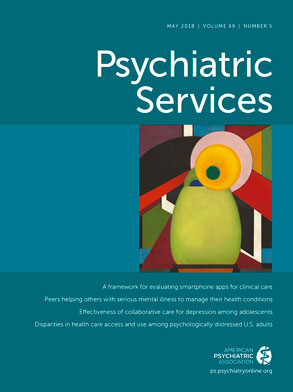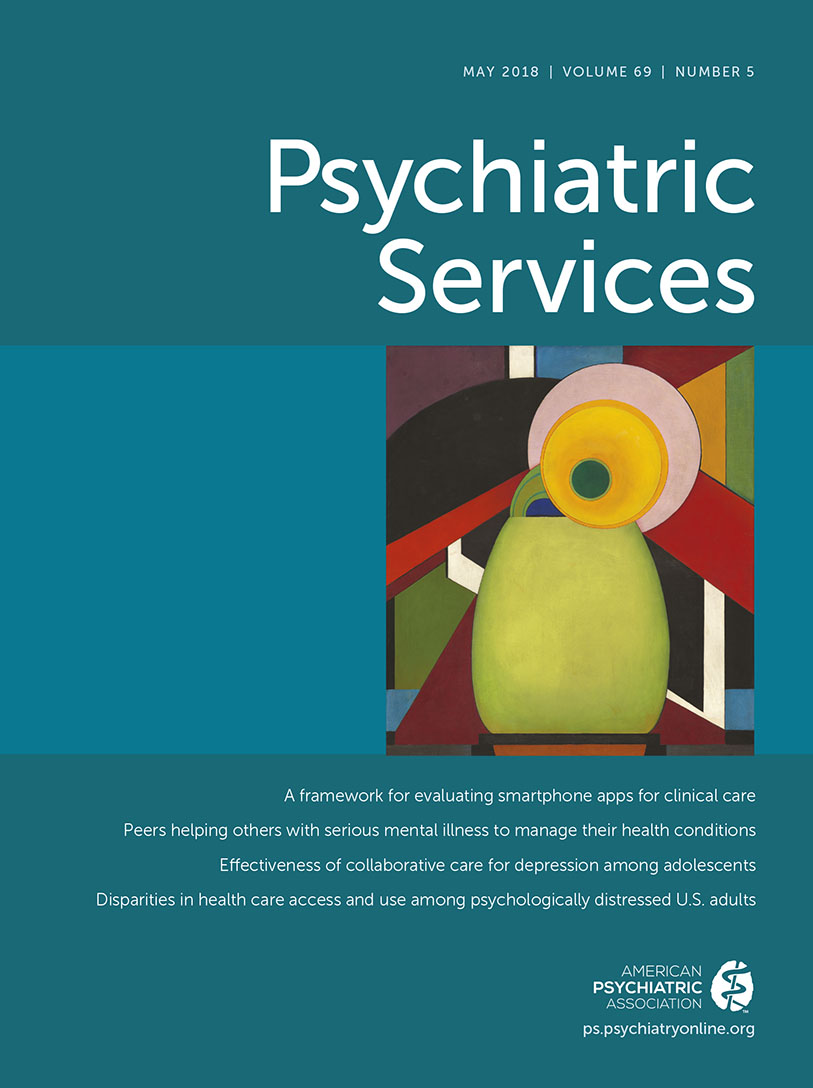National Estimates of Recovery-Remission From Serious Mental Illness
Abstract
Objective:
Methods:
Results:
Conclusions:
Methods
Procedures and Measures
Analysis
Results
Lifetime Serious Mental Illness and Percentage in Recovery-Remission
Sample Characteristics
| Lifetime serious mental illness | ||||||||
|---|---|---|---|---|---|---|---|---|
| No (N=39,051) | Yes (N=2,401) | Current serious mental illness (N=1,619) | In recovery-remission (N=782) | |||||
| Characteristic | N | % | N | % | N | % | N | % |
| Gender | ||||||||
| Male | 16,581 | 42.4 | 1,039 | 43.3 | 726 | 44.8 | 313 | 40.0 |
| Female | 22,470 | 57.5 | 1,362 | 56.7 | 893 | 55.2 | 469 | 60.0 |
| Race-ethnicity | ||||||||
| White | 31,273 | 81.1 | 1,906 | 78.0 | 1,276 | 79.4 | 630 | 81.2 |
| Black/African American | 3,395 | 8.8 | 208 | 8.7 | 143 | 8.9 | 65 | 8.4 |
| American Indian, Eskimo, Aleut | 545 | 1.4 | 65 | 2.7 | 50 | 3.1 | 15 | 1.9 |
| Asian or Pacific Islander | 1,232 | 3.2 | 71 | 3.0 | 56 | 3.5 | 15 | 1.9 |
| ≥1 | 1,264 | 3.3 | 91 | 3.8 | 54 | 3.4 | 37 | 4.8 |
| Other | 848 | 2.2 | 42 | 1.8 | 28 | 1.7 | 14 | 1.8 |
| Marital status | ||||||||
| Married | 22,318 | 57.3 | 1,029 | 42.9 | 726 | 44.9 | 303 | 38.8 |
| Not married | 16,637 | 42.7 | 1,369 | 57.1 | 891 | 55.1 | 478 | 61.2 |
| Household income | ||||||||
| <$50,000 | 18,026 | 50.1 | 1,523 | 66.7 | 998 | 64.4 | 525 | 71.6 |
| ≥$50,000 | 17,981 | 49.9 | 759 | 33.3 | 551 | 35.6 | 208 | 28.4 |
| Education | ||||||||
| Less than high school | 1,254 | 3.2 | 179 | 7.5 | 119 | 7.4 | 60 | 7.7 |
| High school or equivalent | 7,435 | 19.1 | 522 | 21.8 | 361 | 22.3 | 161 | 20.6 |
| More than high school | 30,199 | 77.7 | 1,695 | 70.7 | 1,136 | 70.3 | 559 | 71.7 |

| Independent variable | OR | 95% CI | Wald χ2a | p |
|---|---|---|---|---|
| Age | .93 | .88–.98 | 7.51 | .006 |
| Age-squared | 1.001 | 1.001–1.002 | 13.86 | ≤.001 |
| Race-ethnicityb | 1.08 | .86–1.35 | .4 | .525 |
| Sex (reference: female) | .9 | .75–1.08 | 1.26 | .262 |
| Household income <$50,000 (reference: ≥$50,000) | .82 | .66–1.02 | 3.2 | .074 |
| Education (reference: high school) | ||||
| Less than high school | 1.21 | .82–1.77 | .9 | .342 |
| More than high school | 1.23 | .97–1.54 | 3.00 | .084 |
| Marriedc | .9 | .74–1.10 | 1.13 | .287 |
Discussion
Conclusions
Footnote
References
Information & Authors
Information
Published In

Cover: Le Tournesol, by Edward Steichen, circa 1920. Tempera and oil on canvas. Gift of the Collectors Committee, National Gallery of Art, Washington, D.C. © Estate of Edward Steichen.
History
Keywords
Authors
Competing Interests
Funding Information
Metrics & Citations
Metrics
Citations
Export Citations
If you have the appropriate software installed, you can download article citation data to the citation manager of your choice. Simply select your manager software from the list below and click Download.
For more information or tips please see 'Downloading to a citation manager' in the Help menu.
View Options
View options
PDF/EPUB
View PDF/EPUBLogin options
Already a subscriber? Access your subscription through your login credentials or your institution for full access to this article.
Personal login Institutional Login Open Athens loginNot a subscriber?
PsychiatryOnline subscription options offer access to the DSM-5-TR® library, books, journals, CME, and patient resources. This all-in-one virtual library provides psychiatrists and mental health professionals with key resources for diagnosis, treatment, research, and professional development.
Need more help? PsychiatryOnline Customer Service may be reached by emailing [email protected] or by calling 800-368-5777 (in the U.S.) or 703-907-7322 (outside the U.S.).
